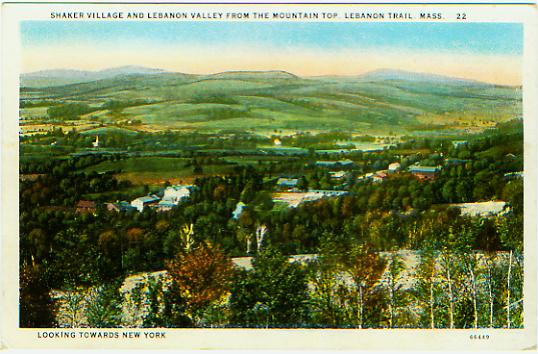History 12 Reading Guide
Shakers: Revising Community, Family and Gender Roles
Reading:
- Charles Nordhoff, "The Shakers," American Utopias (1874), 151-179, skim: 179-214.
Document:
- W. D. Howells, "A Shaker Village," The Atlantic Monthly XXXVII (June, 1876), 699-710, HathiTrust: The Atlantic Monthly. .pdf
- Instructions for writing the short essays.
Questions:
In the mid-1870s, Charles Nordhoff and William Dean Howells visited the Shaker communities at Mount Lebanon and Shirley, respectively.
- How did Charles Nordhoff describe his 1874 visit to Mount Lebanon?
- How did his first-hand account fit into his more general description of the history of this communal society, Mother Ann Lee's leadership, and the expansion of the society into 18 separate communities in New York, Massachusetts, New Hampshire, and Maine?
- How did he use the various primary sources which were available to him?
- How did William Dean Howells's 1876 account of his visit to the Shaker community in Shirley, Mass., compare and contrast with Nordhoff's account? How might we account for the difference?
- Keeping his 1870s vantage point in mind, how do you understand his account (both his description and his assessments) and his presentation of the Shakers, their beliefs, the quality of their lives, and his presentation of the "World" beyond the Shaker villages?
- Ultimately, what was his goal in publishing this account? Was he trying to present a clear argument or assessment, or was he offering observations (sometimes dispassionate, other times less so), or was his account a somewhat ambivalent combination of those two purposes?
- Why were the elders at Mount Lebanon (Elder Frederick Evans) and Shirley (Elder Fraser) so willing to speak to Charles Nordhoff and W.D. Howells?
- Compare and contrast Nordhoff's and Howells's expectations and predictions about the future of Shaker communalism.
Further reading:
- Flo Morse, "In the Nineteenth Century: Some Literary Visitors" [Dickens, Emerson, Hawthorne, Melville, Artemus Ward], in Flo Morse, The Shakers and the World's People (1987), 184-209. (e-reserve)
- F.W. Evans, "Autobiography of a Shaker, Part I," Atlantic Monthly 23.138 (April, 1869), 415-425, and Part II, Atlantic Monthly 23.139 (May, 1869), 593-605.
- Elizabeth A. De Wolfe, "'So Much They have Got For Their Folly': Shaker Apostates and the Tale of Woe," Communal Societies 18 (1998), 21-35.
- Jean M. Humez, "'Weary of Petticoat Government': The Specter of Female Rule in Early Nineteenth-Century Shaker Politics," Communal Societies 11 (1991), 1-17.
- Glendyne R. Wergland, "Lust, 'A Snare of Satan to Beguile the Soul': New Light on Shaker Celibacy," Communal Societies 15 (1995), 1-23.
Questions for the further reading:
- Flo Morse collected accounts from a number of "literary visitors" who made brief visits to some of the Shaker communities during the 1840s—a period of tremendous change and turmoil within the United Society of Believers.
- What troubled the 1840s visitors about the communities as a whole and about the individual members? Why?
- What did they praise about the Shakers?

Shaker Village and Lebanon Valley from the mountain top. Lebanon Trail, Mass. (c. 1912).
